Shootout: Lighting Green Screen and More with Cineo HS2 LEDs
Accomplished cinematographer Shane Hurlbut compares his favorite LED lights.
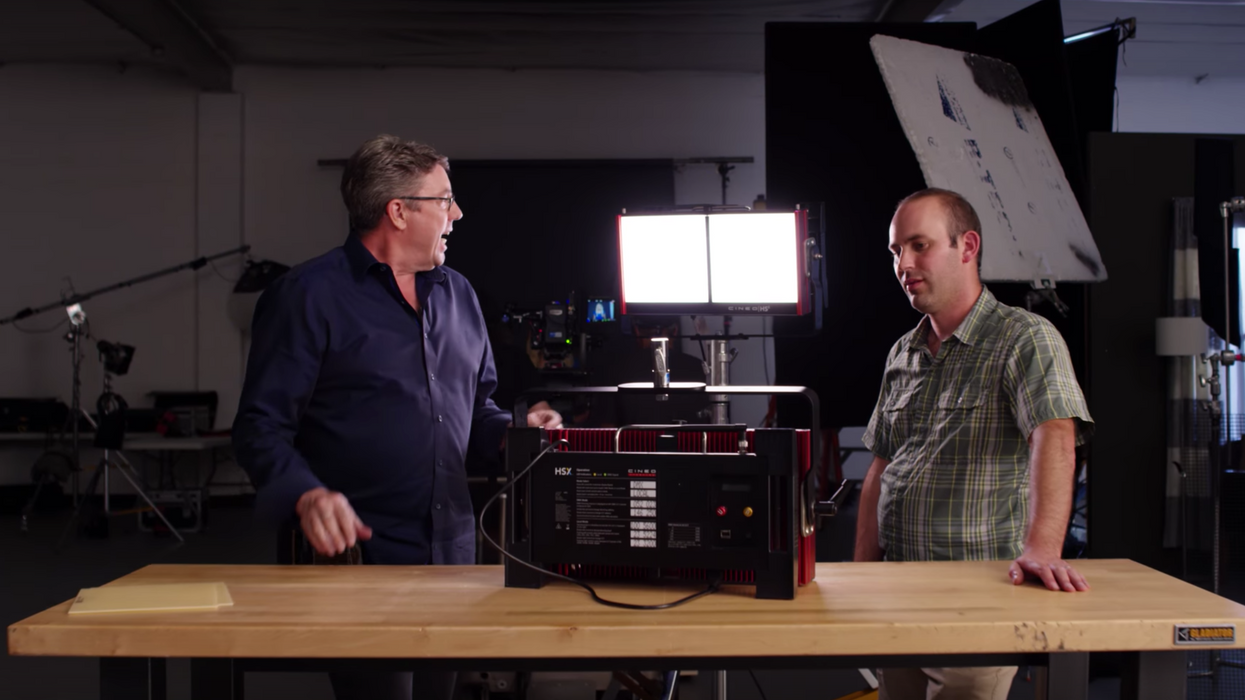
[Editor's Note: This article has been republished with permission from Shane Hurlbut, ASC's blog.]
In the below shootout between Kino Flo Selects, Arri Sky Panels, and Cineo HS2, I go very in depth on CRI, light output, and weight. I also present great side-by-side comparisons of the lights balanced for daylight, Tungsten, and how well they play on skin.
One of my favorite types of light is remote phosphor (LED). It’s incredibly powerful. Since this technology has been introduced to our industry, these lights have been taking over. It’s because of their ability to produce beautiful skin tones, their unbelievable brightness, and just how easy they make it to switch between 3200, 4300, 5600, chroma, green, and blue.
It was an epiphany for me when I started lighting green screens and blue screens with them; the old way of lighting screens meant putting a lot of Kino Flos with green or a lot of SkyPanels up on truss.
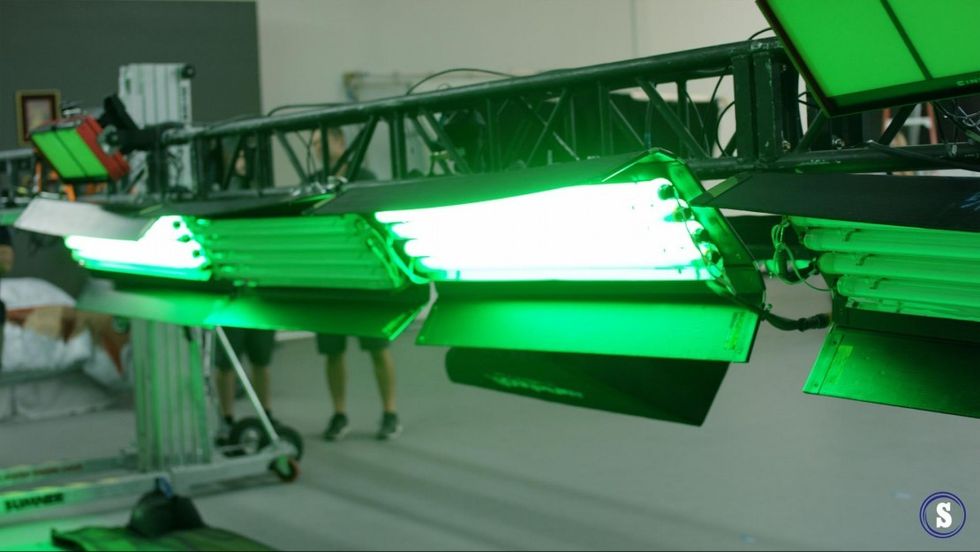
Then came the Cineos. You could light a 20 x 30 green screen with just two of these HS2s.
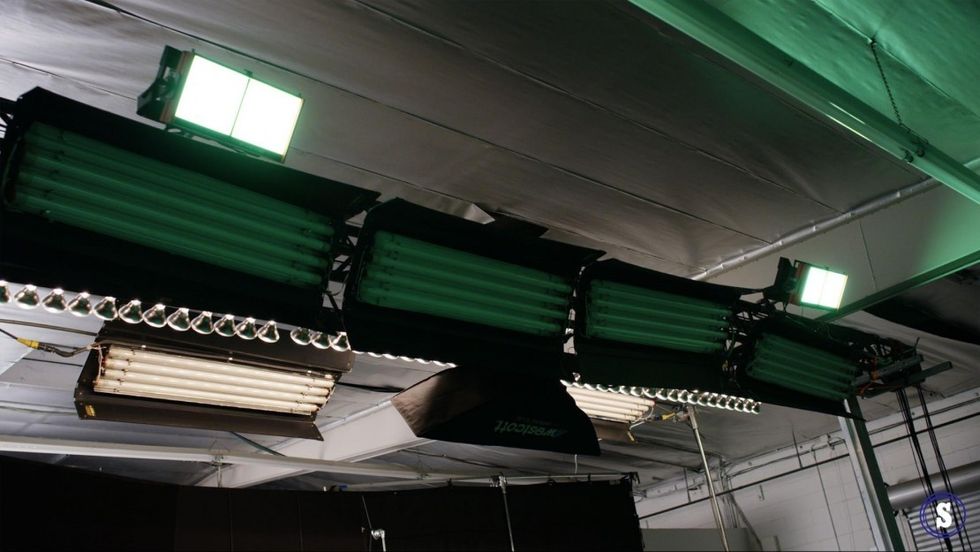
They're bright and efficient, giving me a perfectly balanced green screen with ease. That’s what really caught my attention. Then, I became really impressed when I saw the skin tones.

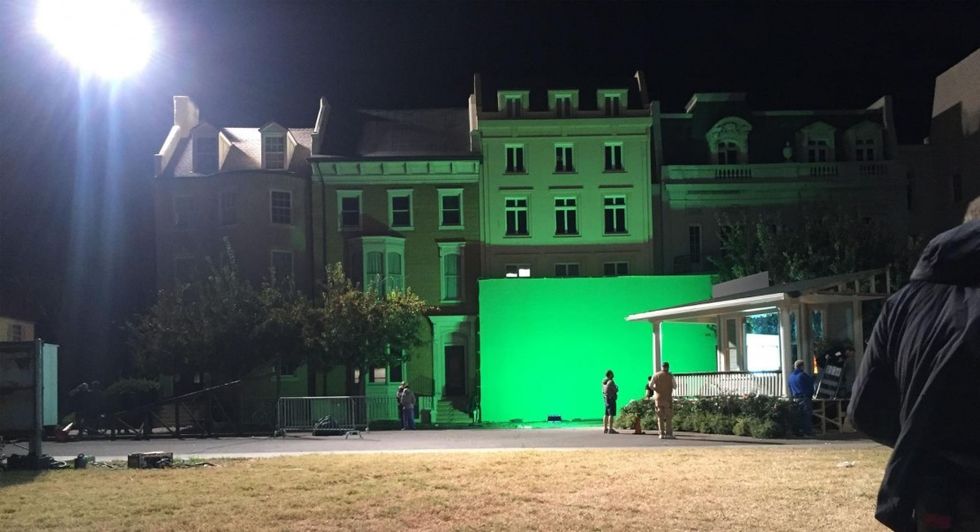
Gaffer Eric Forand calculates one Cineo HS2 light per 20’ of green screen. You could even do one for 30’ if you have enough distance between them.
The Cineo HS2 is just one of the lights from the company; they've got lights for all kinds of uses. I used some of their smaller versions on The Adventurers. I was using the matchsticks that were only 12 inches long and less—they’re very small, but still very powerful.
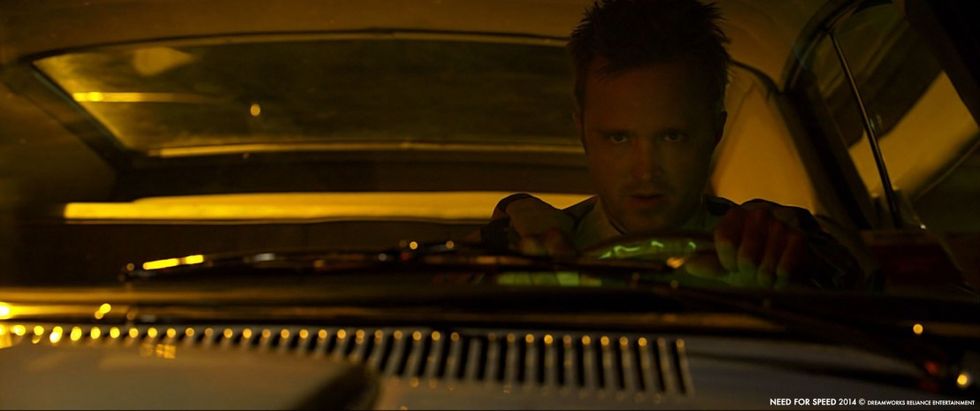
I was hiding them for the dashboard lights dimmed way down, like I did on Need for Speed. I love augmenting and sculpting what’s already there, and these little Cineos make it so easy. I was embedding them in sets so they actually look like they existed in there. I did this as well as the MavXs, which are another smaller version —bigger than Matchstix, but smaller than the HS2s.
Cineos are incredibly versatile lights. On The Babysitter, we were using these things in softboxes and moving them all over the place with total ease because they weigh hardly anything, but they still have tons of output. Eric Forand uses these in softboxes for his key lights on his shows almost 100% of the time because the color is so damn good. It’s insane how high the CRI is on this light.
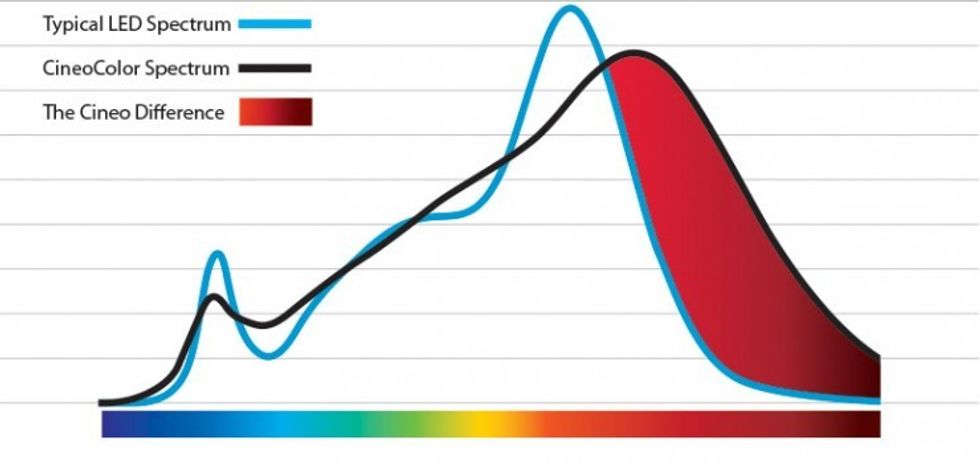
In most of their fixtures the phosphor was on the panels, but with the HSX instead of putting the phosphor just on the panels, they’ve put them on every single LED.
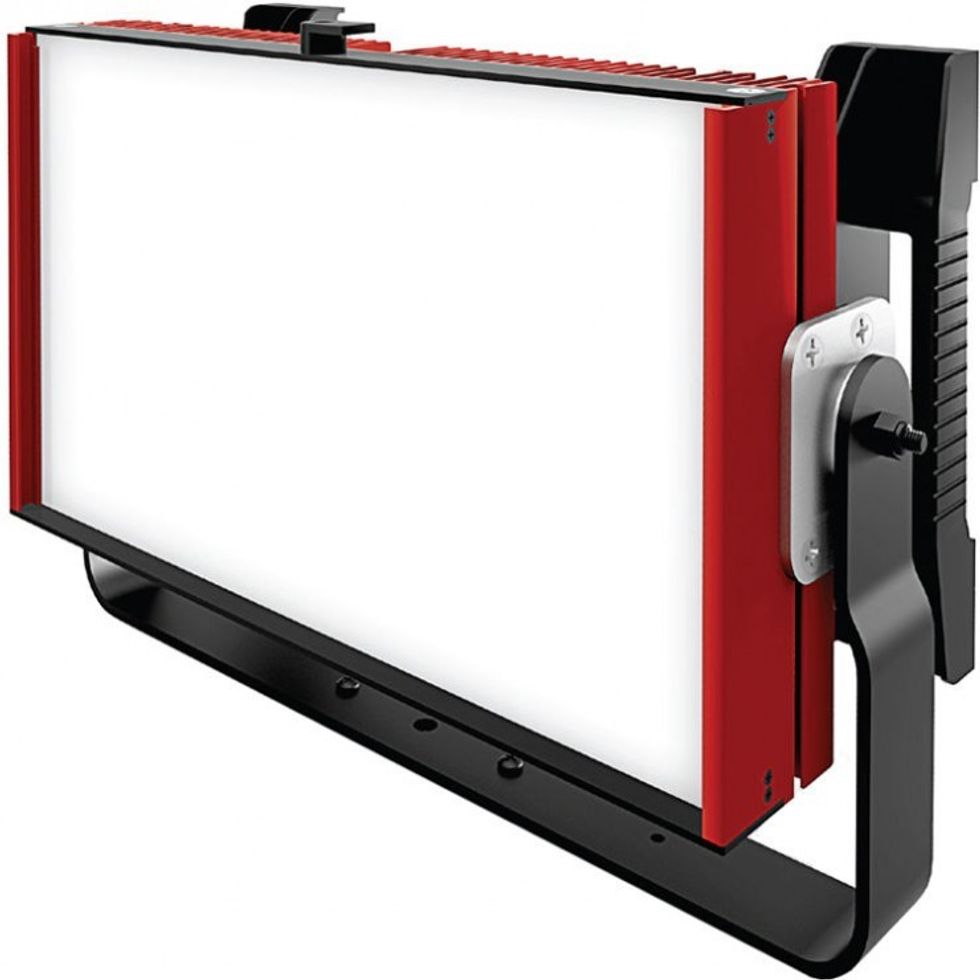
This new HSX is like a bi-color unit, but it has really high CRI. It's not mixing RGB, or RGBW, or RGBAW; it's using one color LED and very specific phosphors to create a bi-color light. You can dial them in like you can with a Sky Panel.
Since the language of film is being tossed into digital, we always talk in stops: a half stop, a full stop. So many times I’ll say, "Dim it down 10%, 30%," but what am I really talking about? I’m looking for a third of a stop, a half of a stop, or a full stop.
This Cineo light actually has true measurable increments built into it. Every 10% is half a stop. With other lights, it's just relative to the light scale; it's not exact. Cineo has dialed in the log rhythm in to make that scale, so when you're dialing in the light, you can dial in how many stops more or less light you’re looking for. It just makes everything faster—there’s no guesswork. All these things increase speed and efficiency on set.
Take a look at what we found testing the Cineo HS2, Kino Flo Select, and Arri SkyPanels:
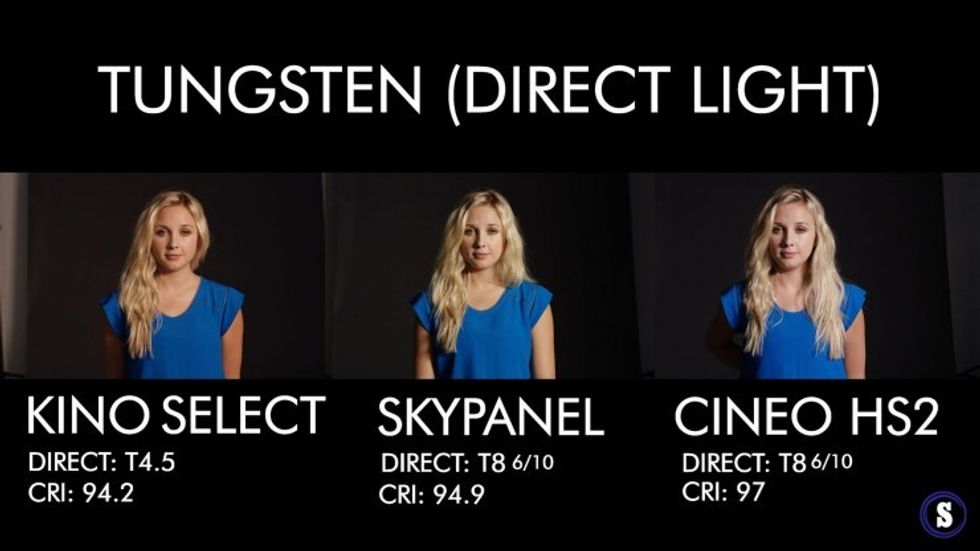
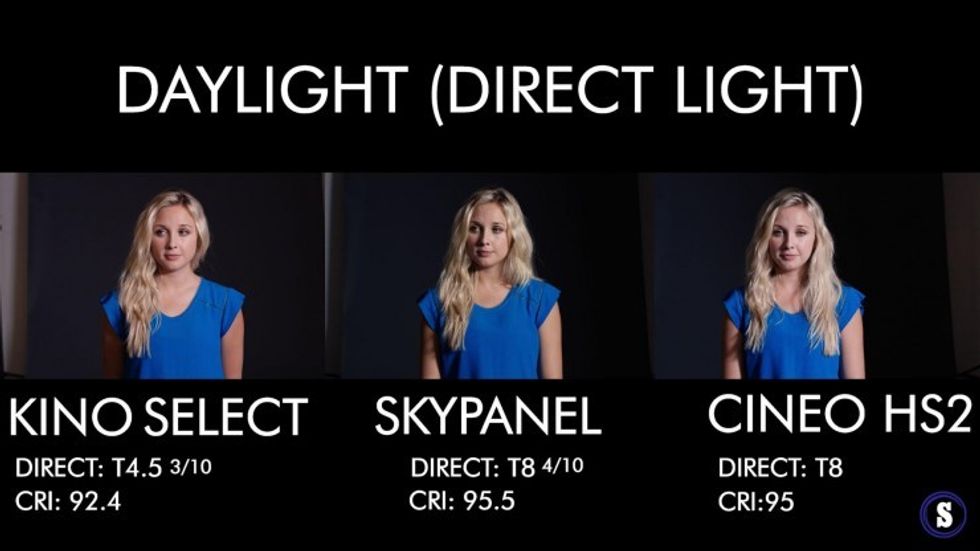
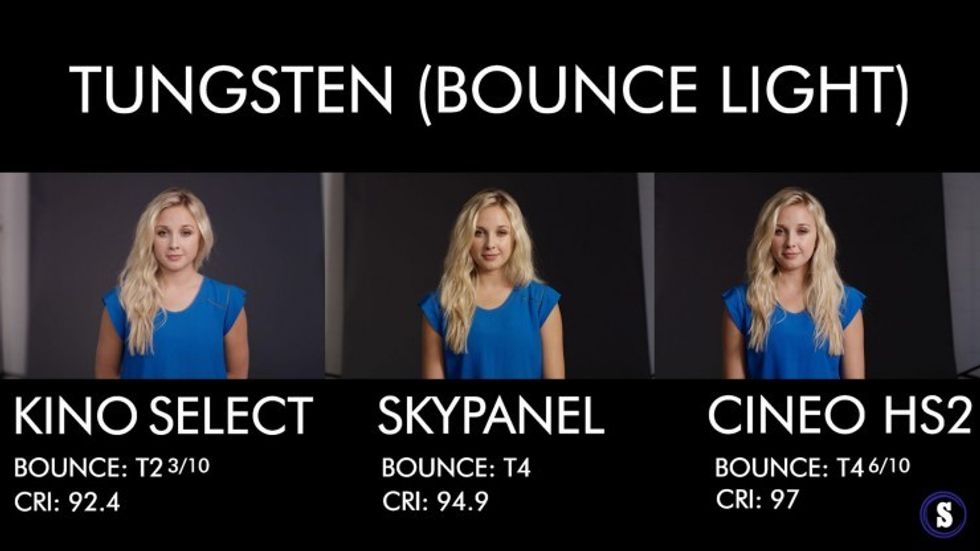
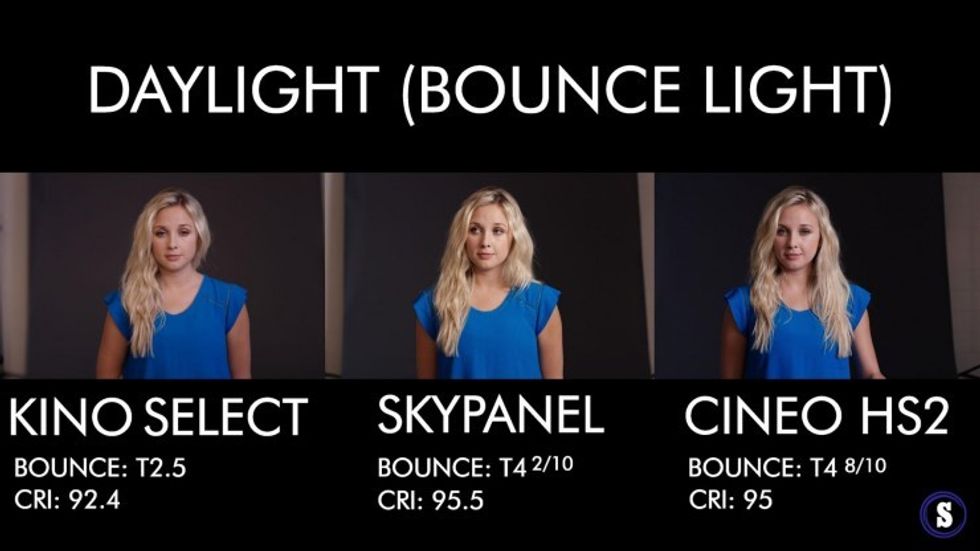
These lights are really incredible, and we go way more in depth on how to light a green screen with them in our Inner Circle articles.
For more information on the gear used to shoot the above video, please visit Shane Hurlbut's website.











